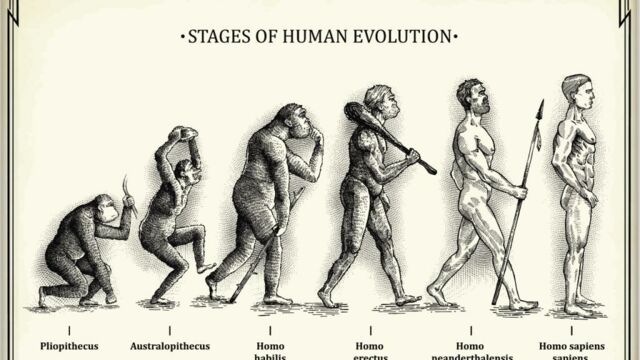Our bodies are probably the most precious thing we have. Everyday they carry us by doing tasks we don’t even realise they’re doing. But beyond being our everyday tool for basic survival, our bodies reflect years of evolution.
Discover our latest podcast
As such, some things in our bodies directly come from a time where humans had drastically different customs. Therefore, the need for some organs and body parts is no longer there but evolution means they haven’t had time to disappear yet.
Find out what these body parts are.
Organs that can be removed
In 2019, Business Insider spoke to Dorsa Amir who used to work as a developmental psychologist at Boston College. In their interview Dr Amir revealed that within our bodies are found what she calls ‘evolutionary leftovers.’
In the article, Business Insider, accompanied by Dr Amir, singled out 9 body parts that haven’t served a purpose for millions of years but can still be found. We chose to highlight 5 of them.
The appendix
This organ used to be necessary when humans’ diet solely relied on plants ‘rich in cellulose’. As our diet expanded and meat took a central role, the need for the appendix lowered.
As of now, this organ can be safely removed without lowering life expectancy. Though it may not be a crucial need to our digestive system, some argue that the appendix stores ‘good bacteria’.
The palmaris longus muscle
Before we get into it, we need you to do something for us: place the back of your wrist on a table, then connect your thumb to your pinky. Do you see a band of muscle pop up? If yes, then you have the palmaris longus muscle. If not, don’t worry, about 10% of the population doesn’t have it either.
According to Dr Amir, this muscle helped our ancestors climb trees. Encyclopedia Britannica quoted by Business Insider explains that this muscle probably helped humans with their ‘grip, possibly while hanging’. Because humans have been walking on two feet for ‘about 3.2 million years’ the necessity for this muscle has been long gone.
Now, the strength of grip doesn’t require the presence of this muscle.
Wisdom teeth
In 2023 wisdom teeth are often synonymous with pain and surgery to get them removed. However, a long time ago our ancestors needed them to eat tough foods.
Dr Amir explains:
Given that we eat pretty soft food now, and molars are usually used for grinding, we don't really need them anymore
Because of a change in diet, our jaws have changed and they no longer allow those extra teeth space. It’s now almost safer to have them removed as they can cause disruption and damage to other teeth which do serve a purpose in 2023.
The coccyx
According to Business Insiderthe coccyx doesn’t serve any purpose anymore. Indeed they explain:
Tailbones helped our ancestors with mobility and balance, but the tail began disappearing around 20 million years ago.
Dr Amir adds,
Our ancestors who had mutations that got rid of the tail seemed to fare better, and thus our tails went away over many generations
However, the tail gene can still appear and some children are born with one. To further prove the lack of necessity of this organ, doctors can easily remove it without any risk.
Auricular muscles
The ability to move ears is something most of us definitely admire in our pets but humans have lost that faculty over time. Indeed, as animals use their ears to express emotions and identify the source of sound, the best humans can do is move their ears up and down.
The reason for this is simple: we have flexible necks. Why move your ears when you have a rotating neck?
Read more:
⋙ From Millennials to Gen Z: Science exposes which generation naps the most
⋙ Genetic mutation: This 75-year-old Scottish woman has got Marvel-like superpowers
Source:
Business Insider: 9 useless body parts that humans no longer need















